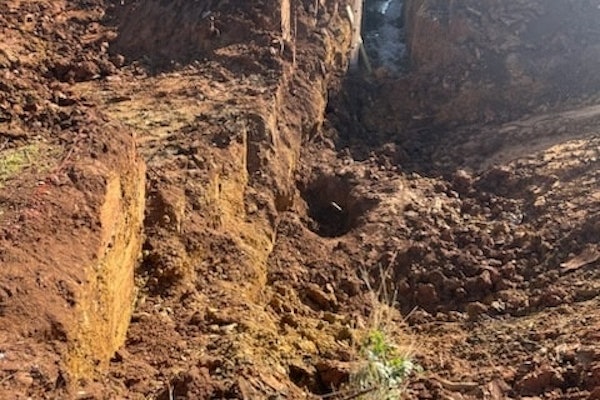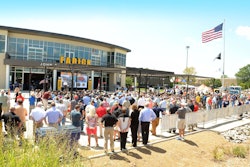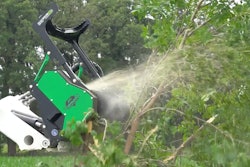Kenworth Truck Company, a division of PACCAR, has a long history of service in vocational and construction markets coupled with a reputation for quality recognized today by J.D. Power and Associates Awards for customer satisfaction ratings in 2000, 2003 and 2004. The 2004 award is particularly pertinent for Equipment World readers as the company’s leading construction model, the T800, was singled out for special recognition by J.D Power and Associates.
Bob Christensen is the general manager of Kenworth Truck Company and a PACCAR vice president. To say he lives and breathes Kenworth trucks is something of an understatement: A 20-year veteran with the company, Christensen has worked in a variety of assignments, including at the company’s Seattle manufacturing plant, a stint at PACCAR Parts managing after-market services for Kenworth, Peterbilt and DAF in Europe, where he worked with dealerships around the country and finally as general manager.
Q: Many contractors look upon Kenworth trucks as a “prestige” brand. Is that a label the company strives to perpetuate?
A: We call ourselves the “world’s best.” That provides espirit de corps throughout Kenworth – a calling for our employees to exceed customer expectations. We aspire to build trucks with better durability, better fuel economy and lighter vehicle weight; the things that are important to our customers. Everyone in this company knows the objective is to be the best. I think that “world’s best” label is a reflection of that commitment and we’re very proud of that reputation.
Our strategy is to invest in technology, and quality. And increasingly that investment is in a more digital form whether it’s torque-control tools, robotic painting or the information systems that we provide to our dealers. We’re trying to take the technology revolution and put it into our plants to improve the quality of our trucks and the work environment for our employees as well.
And that attitude is paying off. Assembly magazine just recognized our Renton, Washington, facility as its plant of the year. Our Montreal plant was just awarded the Grand Prix of Quality from the province of Quebec, and the Chillicothe, Ohio, facility has won a number of awards as well.
Q: It wasn’t long ago the trucking industry was flat and there was a glut of both new and used trucks sitting unsold on dealer lots. Now the market has done a 180-degree turn. Trucks (new and used) are hard to come by. What’s going on?
A: There are a couple of dynamics occurring right now: We have a strong economy, and interest rates are still low. Housing starts are strong, lots of automobiles are being built and there’s a lot of freight moving throughout the country – and that’s really a key driver of this shortage. The on-highway truck fleets got very old in the past couple of years because carriers were putting off buying new rigs until the economy turned around and new emissions technology was proven. So they’re in a replacement stage, trying to modernize their fleets. As the economy grows, some fleets are moving into an expansion mode and acquiring trucks to handle the increased volume of freight. These two factors have generated demand for trucks.
Q: How is Kenworth meeting this challenge? Are you getting the trucks out the door as fast as you’d like to?
A: We’re managing. It’s tough, but we’re building as many trucks as we want to build. We have long-term agreements in place with a lot of the major component suppliers and a very active corporate purchasing group working with companies we don’t have agreements with. PACCAR has invested in some of our component suppliers, whether it’s tooling or other sorts of investments to improve quality and ensure the flow of product reaches us in a timely manner.
Q: Is it going to be hard for Equipment World readers to find new trucks for the 2005 construction season?
A: Yes and no. Yes, because our backlog is growing.
No, if they have a good relationship with their dealer. If it’s a Kenworth dealer, then hopefully he’s anticipating their requirements and there’s a good chance he’s placed orders for trucks that can be converted to meet a customer’s requirements.
My advice would be to pick up the phone and start a rapport with your dealer right now. Because a good relationship can make all the difference in the world when it comes to finding trucks next year. In this environment, it’s critical.
Q: What about truck pricing next year?
A: We’re working hard to control pricing as much as possible. My job is to make certain that we manage costs as well as we can. I think we’re doing a good job – but there is inflation in this industry and that’s a fact of life. We’ve seen it as a result of the technology required to meet the EPA’s emissions restrictions, and now we’re seeing it because new trucks are absorbing raw material price increases. So your readers can expect new truck prices to increase some next year.
Q: Any idea by how much?
A: I wish I had a crystal ball to tell me that. But there are just too many uncertainties right now to quote an absolute number.
Q: And, adding to the problems you’re facing right now, you can’t really expect a break because the EPA’s Tier 3 emissions come into effect in 2007.
A: Exactly. But the ’07 emissions cycle will be less dramatic than it was in ’02. We’ll have the new engines in the testing phase of their development cycle much earlier in the process this time around. And both Caterpillar and Cummins – our major suppliers – are not dramatically changing their technology to meet these guidelines.
Q: Are we going to see this round of emissions technology drive truck prices up further?
A: The focus of the new technology will be adding diesel particular filters to vehicles – so it’s not the huge leap we witnessed last time. There will be a cost associated with this new technology. But that cost has yet to be determined and it may not be as dramatic as it was in 2002.
Q: And you’re confident Cat and Cummins will be able to provide you with viable solutions to meet the Tier 3 restrictions?
A: Yes. We select engine supplier partners for the long haul. And we believe that both Cat and Cummins have good quality engineering, good resources available and the necessary means to provide the most efficient engines that technology can create. Based on that, we don’t really have any concerns about their ability in the ’07 processes. The most recent (Tier 2) emissions technology proves that point. Both companies developed different solutions that work well given the technology and emission framework each company has to offer.
Q: Do you think we’ll see a pre-buy like we did in 2002?
A: No. Primarily for two reasons: One, the technology in 2002 was so new and different that a lot of people were concerned about reliability and fuel economy. As I said, the technological leap won’t be as large in 2007.
The second factor is the truck market was extremely soft going into that period of time. Then the pre-buy hit, and the ramp-up for new trucks it created was so severe, the industry couldn’t meet the demand.
Going into ’07, however, I think the volume of business will already be strong (based upon current economic forecasts). And the age of the fleets will be in an optimum range, so any market increase created by the Tier 3 regulations will be somewhat muted by an already strong demand for trucks.
Q: Many contractors – when they’re starting out – tend to focus on yellow iron first and buy their trucks used. Any thoughts for a reader out there who can’t find a quality used truck right now and is considering buying new for the first time?
A: Kenworths are built for a long, productive life and many people will choose a Kenworth product in the secondary market because they know that uptime continues beyond the first owner. Having said that, the contractor who buys a new T800 or a W900 for a vocational application is buying that truck because they value its light weight and durability and they realize the success of their business depends on a variety of different pieces and types of equipment. I believe a truck is every bit as critical as any piece of yellow iron on a jobsite. Kenworth offers a strategic advantage in that equation: Better up time, higher payloads, driver comfort and set back axles that provide a better turning radius and more maneuverability.
The second part of buying a new truck is that you can run your business better because you’re not just buying a vehicle off-the-rack, so to speak. You’re transitioning to a purpose-built truck designed for your specific jobs. So you’re going to see an increase in productivity when you add that degree of specialization to your fleet.
Q: Kenworth still offers the ability to custom-create large, specialized vocational trucks for use in severe applications all over the world. Does building these special-order trucks with specialized craftsmen place additional demands on you as a manufacturer?
A: It doesn’t necessarily place extra demands on us. What it does do is contribute to the reputation of our product in North America. Kenworth is known for its ability to engineer a product that works well for our customers’ operations. The Off-Highway Group is basically an extension of that. We engineer these products in a way that will work better for customers in oil fields, mining operations, timber or what have you. Just like we do for a dump truck operator anywhere in North America. It’s the same process – we’re just using heavy-duty components.
Q: Can Kenworth learn things from those severe-duty trucks that filters down into your North American products?
A: Yes. Particularly in areas of cooling and in designing trucks to excel in harsh work environments. We’re using that technology and severe-duty experience to improve the performance of our more conventional vehicles. These inputs are used by our engineering groups to find better metals and create better designs for future trucks and it’s used in the assembly plants to make certain the vehicles we build are put together well and the engineering values that are specified are completed right through the manufacturing process. PACCAR is proud of the investment we are making and the technology that goes behind the vehicles and we think the “world’s best” means the world’s best technology is being used to develop these trucks.









